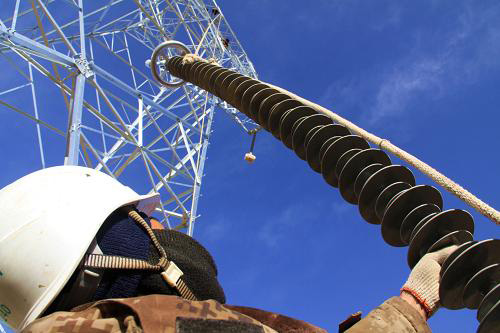Composite insulator structure:
The main structure of composite insulators generally consists of three parts: shed sheath, fiber glass reinforced core rod and end fittings. The shed sheath is generally made of high-temperature vulcanized silicone rubber, ethylene propylene rubber and other organic synthetic materials, the core rod is generally a glass fiber reinforced plastic composite material with glass fiber as reinforcement and epoxy resin as matrix; the end fittings are generally carbon cast steel or carbon structural steel with hot-dip galvanized layer on the outer surface.
Usage of each part of the composite insulator
The core rod and the end steel fittings provide the mechanical load. The core size and the steel grade mainly decide the strength which the insulator can reach.
The shed and sheath bear electrical performance. Silicone rubber is currently the best material for composite insulator shed and sheath, and its unique hydrophobic migration performance is the key to the successful use of silicone rubber in dirty areas.

Composite insulator advantages and disadvantages:
Composite insulators are characterized by light weight and small size. Their weight is only 10% to 15% of that of porcelain or glass insulators, making them easy to install, replace and transport. Composite insulators are post type structures with almost equal distances between inner and outer poles. Generally, internal insulation breakdown does not occur, and zero value detection is not required. The surface of the insulator is highly hydrophobic, with good anti-fouling effect, which prolongs the cleaning cycle and greatly reduces labor intensity.
The disadvantage is that the commissioning time is short and the service life remains to be determined. The bending and torsion resistance is poor, and brittle fracture is prone to occur when subjected to large lateral pressure. The strength of the shed is low, and trampling and collision are not allowed. The accumulated dirt is not easy to clean, and it will gradually lose its hydrophobicity over a long period of time.
Though there are disadvantages too for composite insulators, the more advantages than other insulators make them more suitable for many areas such as sea side and polluted area.